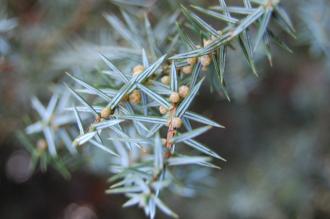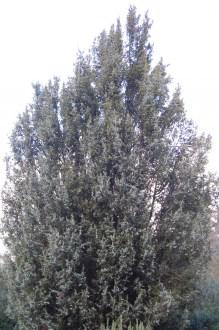
Juniperus oxycedrus Detail (21/01/2012, Kew, London)
Position: Full sun
Flowering period: Late winter
Soil: Moist, well drained
Eventual Height: 2-8m
Eventual Spread: 4-8m
Hardiness: 7a – 10b
Family: Cupressaceae
Juniperus oxycedrus is an evergreen shrub/ tree that produced a variable shape, from spreading to erect. Its blue/ green leaves are sharply pointed, appearing in whorls of three and are up to 2cm long. The dioecious flowers of the plant are inconspicuous, appearing in late winter. The female seed cones are berry like, up to 12mm across, are initially green in color ripening to an orange/ red within 18 months. The male pollen cones are up to 3mm across and yellow color.
Juniperus oxycedrus, commonly known as Prickly Juniper, Prickly Cedar, Cade, Sharp Cedar and Cade Juniper, is native to the Mediterranean region, growing on a variety of rocky sites from sea level up to 1600 metres in altitude. The essential oil Cade oil is produce from this shrub/ tree.

Juniperus oxycedrus (21/01/2012, Kew, London)
The etymological root of the binomial name Juniperus is derived from the old Latin name for the Juniper tree. Oxycedrus is derived from the Greek oxys ‘sharp’ and cedrus ‘cedar’.
The landscape architect may find Juniperus oxycedrus useful in informal locations, it can be used to producing informal evergreen screen. Once established it will tolerate drought conditions.
Ecologically, J. oxycedrus is attractive to birds who eat the cones.
J. oxycedrus prefers moist, fertile, well-drained soils. It tolerates most pH of soil.
J. oxycedrus requires little maintenance.
Advertisement
